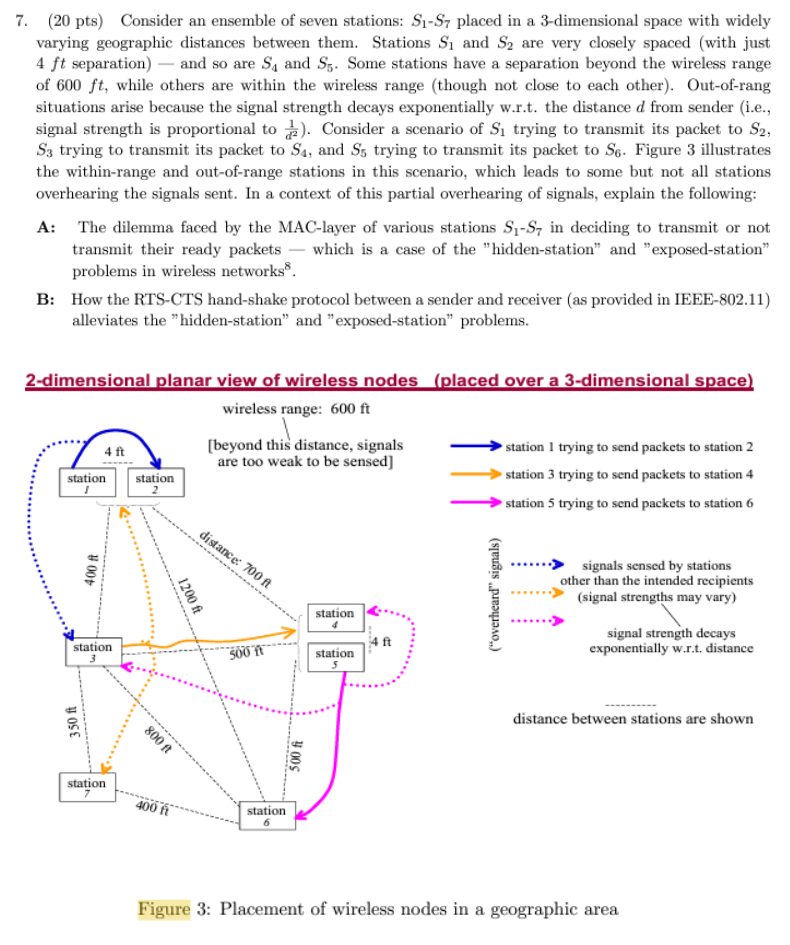Question
(20 pts) Consider an ensemble of seven stations: S_(1)-S_(7) placed in a 3-dimensional space with widely varying geographic distances between them. Stations S_(1) and S_(2)
(20 pts) Consider an ensemble of seven stations:
S_(1)-S_(7)placed in a 3-dimensional space with widely\ varying geographic distances between them. Stations
S_(1)and
S_(2)are very closely spaced (with just\
4ftseparation) - and so are
S_(4)and
S_(5). Some stations have a separation beyond the wireless range\ of
600ft, while others are within the wireless range (though not close to each other). Out-of-rang\ situations arise because the signal strength decays exponentially w.r.t. the distance
dfrom sender (i.e.,\ signal strength is proportional to
(1)/(d^(2))). Consider a scenario of
S_(1)trying to transmit its packet to
S_(2),\
S_(3)trying to transmit its packet to
S_(4), and
S_(5)trying to transmit its packet to
S_(6). Figure 3 illustrates\ the within-range and out-of-range stations in this scenario, which leads to some but not all stations\ overhearing the signals sent. In a context of this partial overhearing of signals, explain the following:\ A: The dilemma faced by the MAC-layer of various stations
S_(1)-S_(7)in deciding to transmit or not\ transmit their ready packets - which is a case of the "hidden-station" and "exposed-station"\ problems in wireless networks
^(8).\ B: How the RTS-CTS hand-shake protocol between a sender and receiver (as provided in IEEE-802.11)\ alleviates the "hidden-station" and "exposed-station" problems.\ 2-dimensional planar view of wireless nodes (placed over a 3-dimensional space)\ wireless range:
600ft\ [beyond this distance, signals\ are too weak to be sensed]\ distance between stations are shown

Step by Step Solution
There are 3 Steps involved in it
Step: 1

Get Instant Access to Expert-Tailored Solutions
See step-by-step solutions with expert insights and AI powered tools for academic success
Step: 2

Step: 3

Ace Your Homework with AI
Get the answers you need in no time with our AI-driven, step-by-step assistance
Get Started


